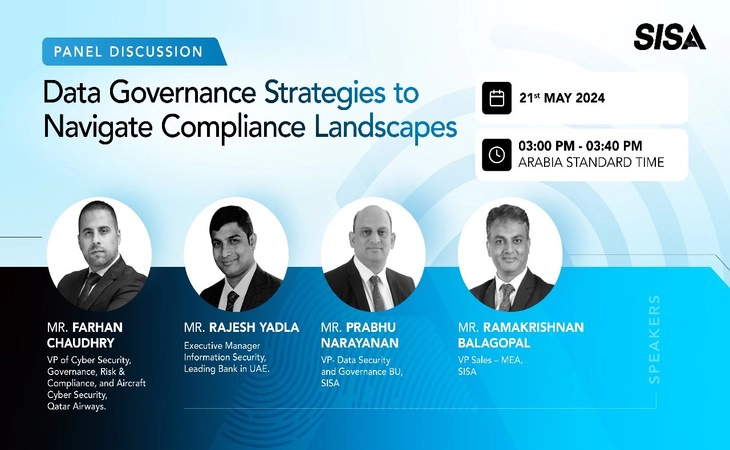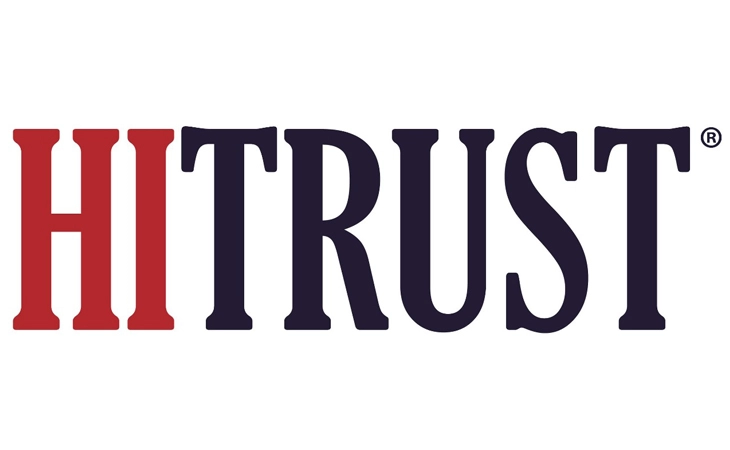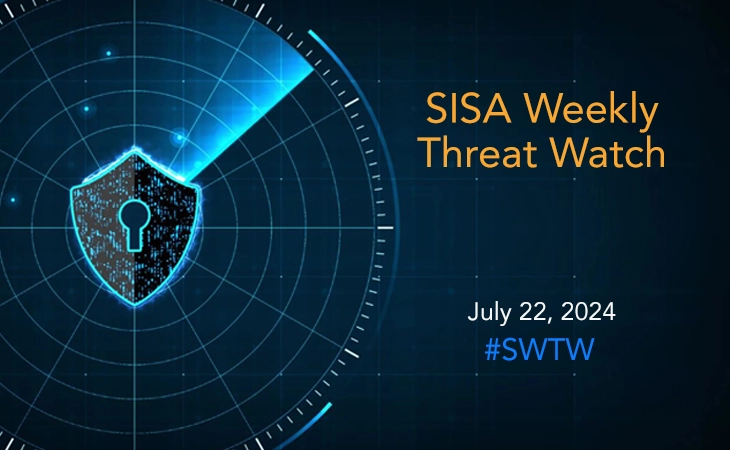- May 26, 2022
Everything You Need to Know about Data Discovery and Data Classification

Whether it is increasing the visibility across the network, meeting regulatory compliance, or protecting sensitive data from breaches and leaks, Data Discovery and Data Classification can benefit organizations in multiple ways. With the rapid expansion of perimeter-less networks and proliferation of data across businesses of all sizes, identifying and classifying the data must be the first step to protect it from emerging cybersecurity risks.
This article answers some of the most frequently asked questions about data discovery and classification and helps better understand the key processes vital to ensure complete Data Protection.
1. What is the difference between sensitive and non-sensitive Personally Identifiable Information (PII)?
Personally Identifiable Information (PII) refers to data or sets of data that could identify an individual. PII data can be associated with individuals to either recognize them uniquely or through a combination of several identifiers. PII can be classified as sensitive or non-sensitive:
- Sensitive PII: Information such as credit card information, passport information, financial information, and medical data are sensitive PII. Such information, if disclosed or leaked can harm the individual. Therefore, it should always be collected, stored, and transmitted securely.
- Non-sensitive PII: Information that can be easily accessed from public records or websites such as date of birth, zip code, and religion is termed as non-sensitive PII. Such a type of information cannot uniquely identify an individual and therefore can be transmitted in an unencrypted form.
2. What is the difference between structured, semi-structured, and unstructured sensitive data?
Sensitive data can be present across the organization’s network in three forms as mentioned below:
- Structured: Structured data are organized data that can be easily stored in databases with rows and columns. Such types of data can be easily searched, analyzed, and classified into sub-groups for efficient data management.
- Unstructured: Unstructured data cannot be contained in tabular form. With no defined structure, such type of data is difficult to search, manage and analyze without the help of AI and ML algorithms used by automated tools.
- Semi-structured: Semi-structured data are a mixture of both the types mentioned above. These types of data have some defined characteristics but do not have a rigid structure. Although semi-structured data has some classifying characteristics, the fluidity of the data still exists.
3. What are the most common challenges in protecting sensitive data from breaches?
Over-exposure of data leads to costly fines by regulators, diminished customer trust, and damaged reputation. Protecting sensitive data from breaches and ensuring effective data privacy and protection is not easy and comes with its own challenges (Read our earlier blog for a detailed view on real-time data protection challenges). Some of the most common ones are mentioned below:
- The exponential growth of data: The increasing volume of data with continuous technological innovations makes it overwhelming for organizations to handle billions of data records.
- Dark Data: It can be challenging for organizations to protect sensitive data from risks and breaches if they are not aware of its existence.
- Compliance Fatigue: Mass adoption of digital technologies and proliferation of data has contributed to the emergence of more rigorous regulatory compliances. Organizations end up juggling multiple standards while enforcing the policies they are liable to.
Automated data discovery and data classification tools simplify the identification of data at scale and help ensure secure storage of sensitive data. With the help of such tools, organizations can achieve more visibility into their environment and determine the sensitivity of data to mitigate the potential risks of data breaches.
4. What is Sensitive Data Discovery and why is it important?
One of the initial and most integral processes of data protection, sensitive data discovery refers to the process of identifying and locating sensitive information spread across the entity’s network. The collected data is then evaluated to determine the risks associated with stored sensitive data and securely move such data to quarantine.
Data discovery tools help business leaders explore data and apply advanced analytics to extract the insights and develop a better data security posture. This process ultimately helps organizations to ensure their customers’ privacy and protect their data from unwanted leaks. Data discovery is essential for businesses to:
- Enhance data visibility.
- Classify and track sensitive data.
- Comply with data regulations.
- Develop data governance policies.
- Save the organization from reputational damage.
5. What is Data Classification and what are its different types?
Data classification refers to the process of categorizing structured or unstructured data into different sets for efficient usage and protection. Data classification tools classify the data into sub-groups by tagging the data which makes it easier to search, locate, track and retrieve. As an essential element of data protection, data classification is necessary for better data optimization, data analysis, risk management, compliance, and data security.
Depending on the business needs and data type there are three types of data classification as mentioned below:
- Content-based Classification: Reviewing and classifying files and documents.
- Context-based Classification: Classifying files based on indirect indicators such as application, location, and creator.
- User-based Classification: Classifying data based on end-user knowledge and discretion.
6. What are the consequences of over-exposed data with respect to various compliance and regulations?
Meeting compliance requirements is essential to implementing a successful data security framework. Over-exposure of data or compliance failure can lead to legal consequences and hefty fines. Stringent data regulations such as California Consumer Privacy Act (CCPA), General Data Protection Regulation (GDPR), and Health Insurance Portability and Accountability Act (HIPAA) strictly regulate the collection, storage, and usage of sensitive data. Violations of such regulations can result in authorities imposing penalties and costly fines as well as issuing warnings and reprimands to the organization which may lead to losing customer trust and reputational damage.
7. How do Data Discovery and Classification tools help organizations meet compliance requirements?
In addition to gaining complete visibility into the data and the most vulnerable areas of the organization, data discovery and data classification tools help organizations stay one step ahead to achieve regulatory compliance. Tools such as SISA Radar help ensure that the data is stored in compliant locations across the organization’s network and is transmitted in a controlled manner. It also assists in grouping the data based on the regulations it is governed by and ensures that appropriate processes and controls are implemented to prevent over-exposure. Moreover, data discovery and classification tools help organizations define the right scope for PCI DSS compliance by accurately evaluating the processes and mapping the flow of data across the environment.
8. What is the difference between data privacy and data security?
The primary concern of data privacy is to ensure that the data is securely collected, used, and shared. In contrast, data security refers to the protection of data from various internal and external threats. Measures applied for data security need not satisfy the requirements for data privacy and vice versa.
While data privacy policies focus on data being procured, processed, stored, used, and transmitted in compliance with the regulations and with respect to the individual’s privacy, data security policies require taking measures to protect data from malicious attacks and prevent unauthorized access to the collected data.
9. How do automated data discovery and classification tools reduce the percentage of false positives?
With the proliferation of data and ever-changing definitions of sensitive personal data, there is an increased likelihood of receiving false positive alerts while scanning an organization’s vast network environment. Data discovery and classification tools, integrated with AI and ML, provide a flexible approach with both agent-based and agent-less scanning which simplifies the process and increases scalability. Automated solutions like SISA Radar apply advanced techniques along with customizable algorithms for effective analysis of the data, delivering accurate results and reducing the percentage of false positives.
10. What is data remediation and how does it reduce the risk of data breaches?
Data remediation, a core process of data management strategy, is the process of keeping datasets up-to-date and clean to avoid security vulnerabilities and compliance issues. It involves reorganizing, archiving, migrating, or deleting the data to ensure continuous protection and compliance. Data remediation also helps improve the workflow by reducing the unwanted data overload, making data fit for the intent or use.
Secure storage or removal of data after remediation ensures a reduction in sensitive data footprint which helps minimize the risks of over-exposure and data leaks and saves the organization from reputational damage. The data remediation process also involves determining the actions and controls necessary to mitigate the potential risks of data breaches by masking, truncating, quarantining, or deleting any compromising information.
11. What is the difference between Anonymization and Pseudonymization of data?
Anonymization and pseudonymization are two different types of data remediation or encryption methods that are used to protect the identity of an individual. These two techniques can be defined as follows:
- Anonymization: A method that involves processing data in such a way that it cannot be related to an identifiable person. It removes the link between data and the individual through randomization or aggregation so that the data is no longer identifiable but still holds value for the business.
- Pseudonymization: This is a method of processing personal data such that it cannot be attributed to an individual without additional information or a protected key that could ‘unlock’ the data.
Although both methods mask personal data to reduce the risk of linking it to an individual, pseudonymized data can be reversed, whereas anonymized data is irreversible. Organizations can choose either of the techniques depending on the use cases, degree of risk, compliance requirements and purpose of processing the data.
12. What is a data retention policy and why should organizations have one?
An organization’s data retention policy governs and controls the storage of information for a specific period to meet compliance and regulatory requirements. It also involves the process of disposing of the data after a set time. Data retention policy also specifies the source of information collected, its format and purpose, applicable compliance, and measures taken to ensure its security.
Besides adhering to the legal and regulatory requirements, a data retention policy also offers other benefits to the organizations. Some of them are listed below:
- Increased efficiency: A data retention policy ensures easy access to data for everyone in the organization, making them familiar with the data sources. This process leads to a reduction in redundancies, stronger data governance and higher efficiency in handling the data.
- Reduced Cost: Information that is no longer useful for the organization leads to inefficient use of storage capacity. Timely disposal of such data governed by the data retention policy reduces the cost of storage and saves more space for new data.
13. What is Data Loss Prevention (DLP)?
Data Loss Prevention (DLP) refers to a set of tools and processes that help detect and prevent the risks of data being lost, breached, misused, or exfiltrated. It involves both content and context-driven analysis of data to classify them and identify the violations of the policies defined by the regulatory compliances. These violations are then taken care of by enforcing remediation processes to prevent the risks of unauthorized data sharing by the end-user. DLP solutions monitor and control the flow of data across the endpoints, corporate networks, and cloud environments to protect it when at rest, in motion, or in use.
14. What is the importance of Data Discovery and Classification for efficient Data Loss Prevention (DLP)?
Data discovery and classification are the key concepts that are essential to lay a strong foundation for Data Loss Prevention (DLP) strategy. To protect data from being lost or misused by unauthorized users and maintain data security, it is vital to first identify and categories the data present in the organization’s environment. Here is where data discovery and classification come into play. These two core processes help strengthen the DLP strategy by swiftly locating the sensitive data and assigning naming conventions to them.
Only after the data goes through the data discovery and classification processes, can an organization determine and implement controls to protect sensitive data and prevent data breaches. A DLP strategy integrated with data discovery and classification can help organizations address vulnerabilities, meet compliance requirements, and maintain effective data security practices.
15. What is the role of a Data Protection Officer (DPO)?
Defined by the General Data Protection Regulation (GDPR), a Data Protection Officer (DPO) ensures the secure processing of personal data in compliance with the applicable regulations. A DPO’s responsibilities include overseeing the organization’s data protection strategy and implementing necessary procedures to ensure compliance. They are also responsible for educating and training the employees about compliance and conducting audits to address potential risks. A DPO also deals with the requests from the data subjects and provides them with information about the processes put in place to protect their personal data.
16. What key features of data discovery and classification tools are essential for effective data management?
A data discovery and classification solution helps businesses ensure the confidentiality, integrity, and availability of sensitive data to protect it from data thefts and breaches. An ideal tool also assists in defining the data flow, meeting the compliance requirements, and managing data complexities across on-premises, cloud, and hybrid environments.
Some of the key features of data discovery and classification tools include:
- Ability to scan all file types including images, audio, and PDF files with handwritten text.
- Integration with Data Loss Prevention (DLP) solutions.
- Integration with AI and ML.
- Customizable search criteria.
- Remediation from centralized console.
- Integration with Security Information and Event Management (SIEM) solutions.
- Ability to scan the network with minimum hardware requirements and low CPU usage.
- User-friendly UI and UX.
- Interactive and portable reports.
17. What are some of the best practices for maintaining data security?
With rapid transformation of technologies and an increase in cybersecurity threats, it is more important now than ever for organizations to protect their businesses from data breaches. Enterprises need to stay on guard to ensure data security across the environment including all networks, servers, endpoints, cloud platforms, and on-premises systems. Some of the best practices to maintain an effective data security strategy include:
- Identify and classify sensitive data – It is essential to gain an understanding of the type of data collected along with its purpose, location, and flow across the network to control its access and exposure.
- Monitor access to sensitive data – Maintaining a data usage policy and restricting access to sensitive data with least privilege to users can help secure data from unauthorized access.
- Use data encryption – Critical business data whether at rest or in transit must be encrypted to safeguard it from attackers even if they get access to it.
- Provide security training to employees – Employees of the organization must be aware of the best practices to handle confidential data and respond to suspicious activities.
- Maintain compliance with security regulations – Complying with security regulations improves customer trust and helps develop robust information security policies that protect every bit of organization’s data.
For a deeper understanding of how an end-to-end data discovery and classification solution like SISA Radar can help your organization overcome the challenges of data protection and maintain data security practices, book a free demo here.
If we missed answering any other questions that you might have, get in touch with our experts for more detailed insights on data discovery and data classification.
 USA
USA India
India APAC
APAC Middle East
Middle East Global
Global




 Facebook
Facebook Linkedin
Linkedin  X
X Youtube
Youtube








